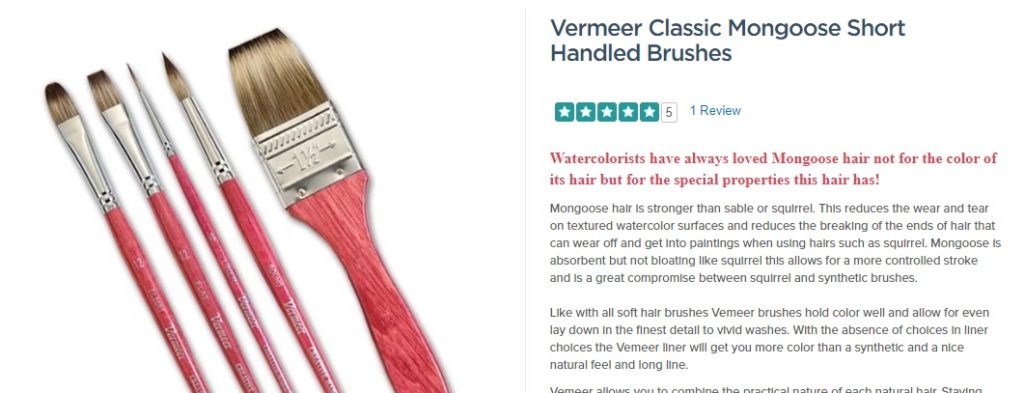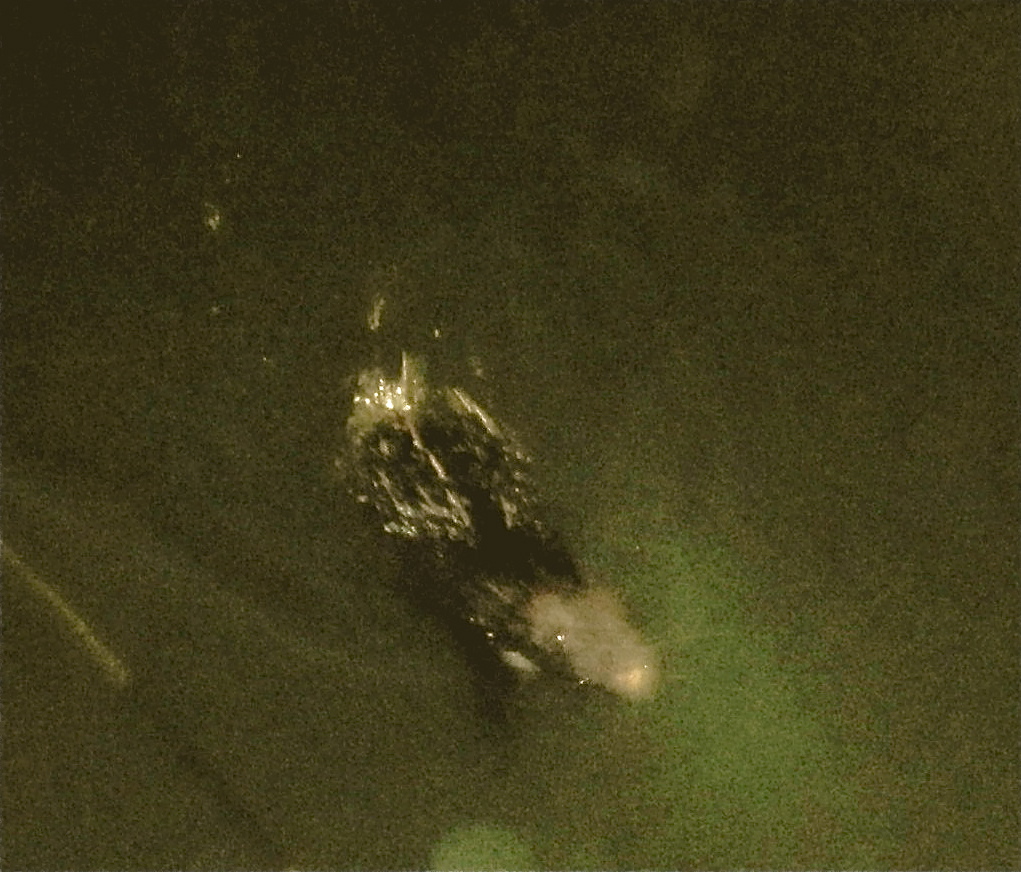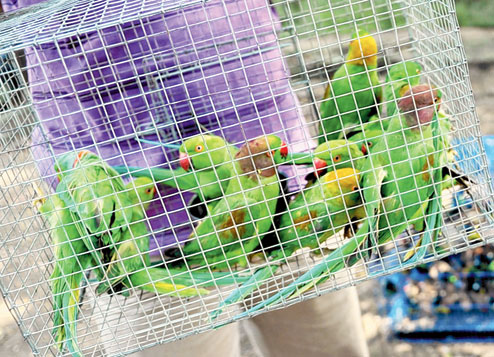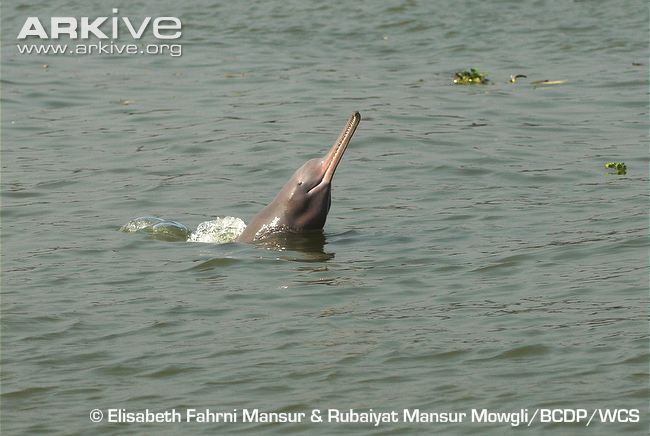“What brush is this?”
“It is sable-hair brush. One of the best brushes.”
“Okay, we will buy it. Will you give us a bill for the same?”
“Bill…umm…no, it is illegal to sell these brushes.”
“Why illegal?”
“It is wildlife. Banned in India.”
The conversation your read above was between an undercover volunteer from Wildlife Trust of India and an art products supplier from New Delhi.
The seller was telling the truth, but not entirely. The brushes he was selling were illegal but they were not actually made of sable hair (Sable is a species of marten from Russia). The brushes were illegal because they were made of Mongoose hair, plucked by hands after the animals that are protected under Indian law are brutally stoned to death.
Out of fear of the authorities, across India, mongoose hair brushes are often sold under pseudo names like Indian Sable, Kolinsky, Badger, pony, Kevin, or natural hair brushes. Outside India though, it is easier to sell mostly as kevin paintbrushes or as we found out in our investigation, even openly as mongoose hair paintbrushes. From India to Europe and America many are readily buying these often-pricey brushes, and using them every day for their longlasting nature and for those controlled strokes that these hair promise.
Most artists who use it are unaware of the illegal nature of the trade or the cruelty that leads to the making of these brushes. However, with 50 to 60 mongooses snared and stoned to death to retrieve 1 kg of mongoose hair, the price being paid for these brushes is unfortunately much more than money can buy.
Nationwide seizures
Last week, over 29,000 paintbrushes made of mongoose fur were seized in Maharashtra under Operation Clean Art by the Wildlife Crime Control Bureau and volunteers of Wildlife Welfare Association (WWA).
According to Aditya Patil, the president of WWA, the volunteers were tracking a few shops since January of this year. They bought a few brushes and sent it to forensic labs for testing. It was found that the hair belonged mainly to the Indian grey mongoose or common mongoose. Depending on its width and type each brush was being sold for approximately Rs. 600.
M. Maranko, regional deputy director, WCCB says that as the mongoose is protected under the Wildlife Protection Act of India, killing it attracts minimum imprisonment of three years extending up to seven years.
And yet, fully aware of the illegal nature of their operations – from the local villagers wanting to earn quick bucks by nabbing and killing the animal to the big manufacturers and suppliers eager to fulfill international demands – many in India are involved in the blood-stained brush business.

In a documentary made by Wildlife Trust of India (WTI), you can see how the animal is snared or trapped, then beaten to death before the hair is plucked from its body. The handful retrieved from each mongoose is sold to a middleman who collects sacks of fur from the villagers to be sold to manufacturers for a price between Rs.3000-Rs.5000 per kilo.
WTI says Kolkata and Uttar Pradesh are the biggest hubs of this black market business. WCCB also found out from the Maharashtra seller that the bulk of manufacturing is taking place in Bijnor in Uttar Pradesh.
Mongooses are fearsome animals. They can fight a cobra, kill a snake with one bite and most importantly keep a farmer’s field clean of mice and other rodents that can destroy the crops. Unfortunately, what they can’t do, is save themselves from the clutches of international trade which is driving the whole business. As long as there is demand for these perfectly shaped bristles across the world, the mongoose will continue to die.
Quick Facts about the Illicit Mongoose Hair Brush Trade
-50-60 Mongoose are stoned and killed to get 1 kg of Mongoose hair.
-Mongoose are killed mostly between the months of April and May when the rabbi crops are harvested.
-The hair is plucked by hands after the animals are stoned to death. Sometimes the hair is removed even before the animal dies.
– There are six species of mongoose found in India. (Indian grey mongoose, Ruddy Mongoose, Stripe necked mongoose, Indian brown mongoose, Crab-eating mongoose, Small Indian mongoose.
– Of these three species have been recorded in wildlife trade in India – Small Indian Mongoose (Herpestes auropunctatus), Striped-necked Mongoose (Herpestes vitticollis), and the Indian Grey Mongoose (Herpestes edwardsii), all of which are protected under the Indian Wildlife Protection Act, 1972.
– Sherkote, Moradabad and Bijnor in Uttar Pradesh; Jehangirpuri & Shahdhara in New Delhi apart from places in Kolkata and Mumbai and many parts of Tamil Nadu are the major trading hubs for mongoose hair brushes, according to Vasudha Mehta, a journalist and an environmentalist.
– Each mongoose yields about 40 gm of hair but when the hair is sorted, only 20 gm of hair is found usable for making paint brushes.
– Mongooses prey on rats, mice, snakes, lizards, frogs, insects and other small animals and are therefore useful farm animals saving billions of worth of food crops annually.
We found evidence that the brushes are easily available online. Like this one being sold in the US,

How to recognise a mongoose hair brush and stop from buying
-Mongoose hair is stiff and therefore points steadily upwards in a brush.
-The hair has a shaded gradation of grey, brown and dark brown.
-The tips of the brush are dark brown in colour with cream or greyish centre and again dark colours near the roots.
-Sellers often sell it under pseudo names like sable, kevin or natural hair brush. Ask and confirm the source.
When you stop buying, the trade would stop too.









